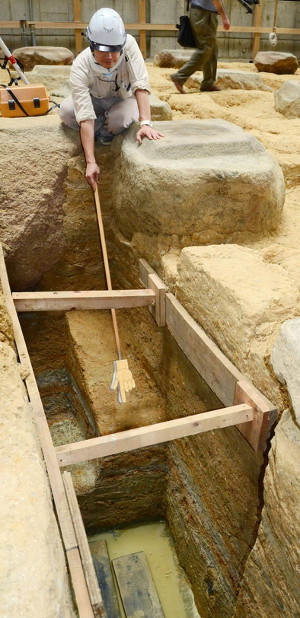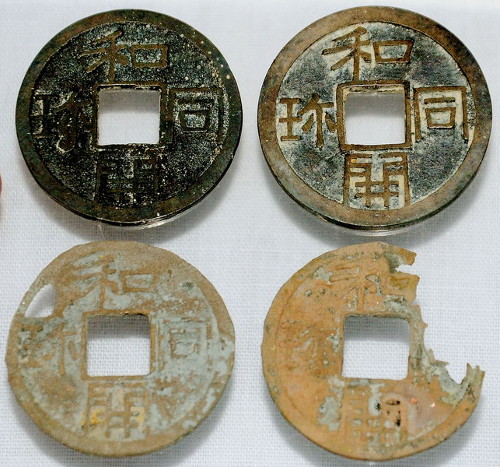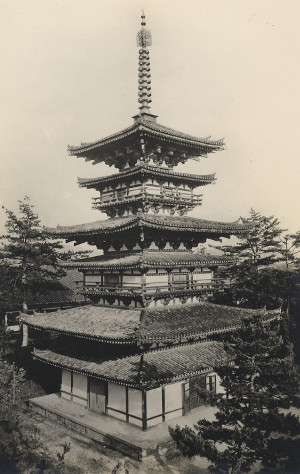Four Japanese Wadokaichin (和同開珎) coins dating from the eighth century have been discovered at the base of Japan’s National Treasure “Toto”, the East Pagoda (東塔 Tō-tō) of the Yakushi-ji Temple (薬師寺) located in Nara, according to a news report by The Mainichi dated August 18, 2015.
The Yakushi-ji Temple is currently being dismantled as part of a full restoration.
Temple officials announced on August 17 that four Wado Kaichin coins had been discovered at the bottom of the 1.7 meter-deep base of the East Pagoda of the temple.

A cultural asset researcher points to a hole where the Wadokaichin coins were found near the foundation of the Yakushi-ji Temple’s East Pagoda
The coins were buried about 1.3 meters east of a foundation rock that supports the central pillar of the pagoda.
The pagoda was constructed in the year 730.
Experts from the Nara National Research Institute for Cultural Properties and the Nara Prefectural Archeological Institute of Kashihara believe that the coins were buried during the groundbreaking ceremony and were used for purification purposes.
The experts claim that this discovery is the oldest example of the ancient practice of burying a widely- circulated coin to purify a construction site.
The four coins were found scattered in a hole about 20 cm by 30 cm.
The image above also clearly shows that the builders of the pagoda used the rammed-earth method, known as the “Hanchiku” method, to provide a stable base for the pagoda. Layers of sand and soil were tamped down to strengthen the foundation.

Four Wadokaichin coins cast during the 8th century found at the base of the East Pagoda
According to the article, the coins appear to have been freshly cast when buried. Two of the coins are in perfect condition. The other two are in good condition with some “decay”.
Being first minted in the year 708, the Wado Kaichin coins are considered Japan’s oldest official coinage. The coins circulated until 958.
The inscription 和同開珎 (Wadokaichin) on the coins is written in Chinese characters which was the written script used in Japan during ancient times.
The Japanese coin was modeled after the Chinese kai yuan tong bao (开元通宝) coin which was first minted in the year 621 during the reign of Emperor Gaozu of the Tang dynasty (618-907).
The Wadokaichin coins are made of copper (bronze) and are 2.4 cm in diameter, the same as the Chinese coins.
The coins were cast following the discovery of large copper deposits in Japan.
Wado (和同) is believed to have the meaning of “Japanese copper” and kaichin (開珎) has the meaning of “currency”.
